小编给大家分享一下Python3.5基础之变量、数据结构、条件和循环语句、break与continue语句的示例分析,希望大家阅读完这篇文章之后都有所收获,下面让我们一起去探讨吧!
具体如下:
1、变量:即一个容器概念
Python中的变量时一个弱类型,不需要声明,可以直接使用。通过变量设置的值,编译器根据这个值确定变量的类型。
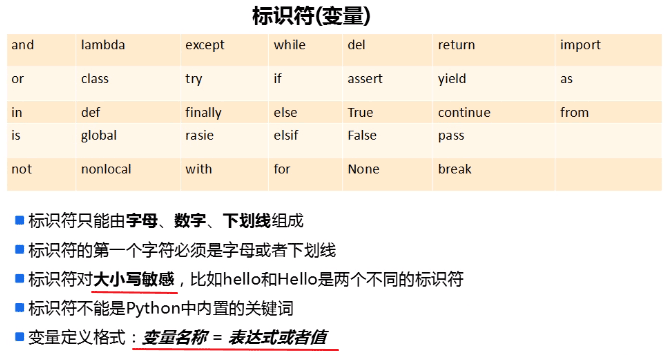
2、运算符
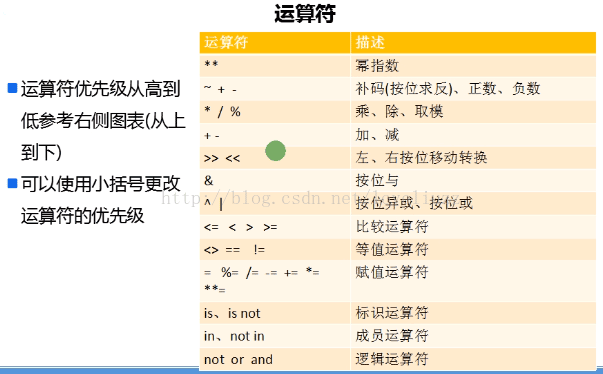
#!/usr/bin/env python
# -*- coding:utf-8 -*-
# Author:ZhengzhengLiu
print(2**3) #幂指数
print(5%3) #取模
print(10&11) #按位与
print(10|11) #按位或
print(10^11) #按位异或
if 1: #1等价于True(非零都等价于False)
print("hello")
else:
print("world")
if 0: #0等价于False
print("hello")
else:
print("world")运行结果:
8
2
10
11
1
hello
world
3、基本数据类型

注:Python3.x里面,没有long类型,整数都是int类型。
#!/usr/bin/env python # -*- coding:utf-8 -*- # Author:ZhengzhengLiu i = 888888888888888888 j = 18 k = 0.5689 z = False s = "hello world" print(type(i)) print(type(j)) print(type(k)) print(type(z)) print(type(s))
运行结果:
<class 'int'>
<class 'int'>
<class 'float'>
<class 'bool'>
<class 'str'>
4、字符串基本运算符
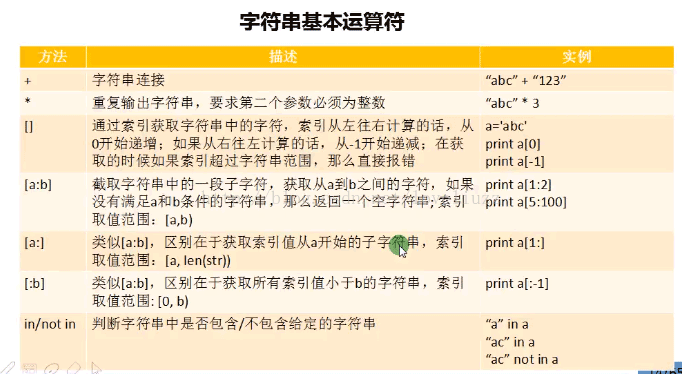
代码举例:
#!/usr/bin/env python
# -*- coding:utf-8 -*-
# Author:ZhengzhengLiu
print("hello"+"3") #字符串连接
print("hello"*3) #重复输出字符串
a = "abdcjfgg"
print(a[0]) #字符串索引取字符(取第一个字符)
print(a[-1]) #取最后一个字符
print(a[2:4]) #取第三、第四个字符,左开右闭
print(a[2:]) #获取索引值2以及后边的字符
print(a[:2]) #获取索引值小于2的字符运行结果:
hello3
hellohellohello
a
g
dc
dcjfgg
ab
5、语句——条件和循环
(1)if条件语句
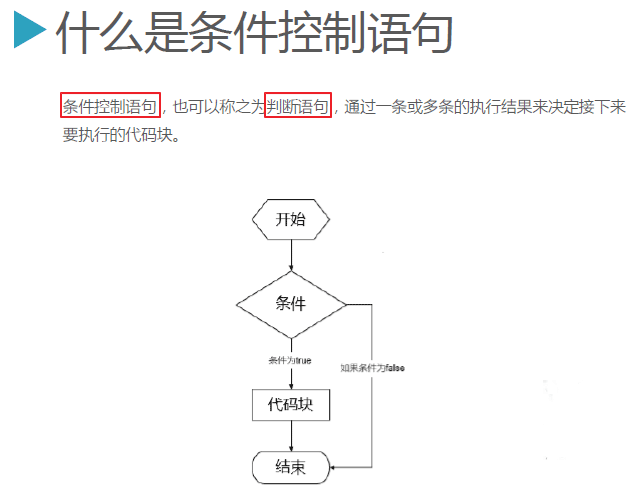

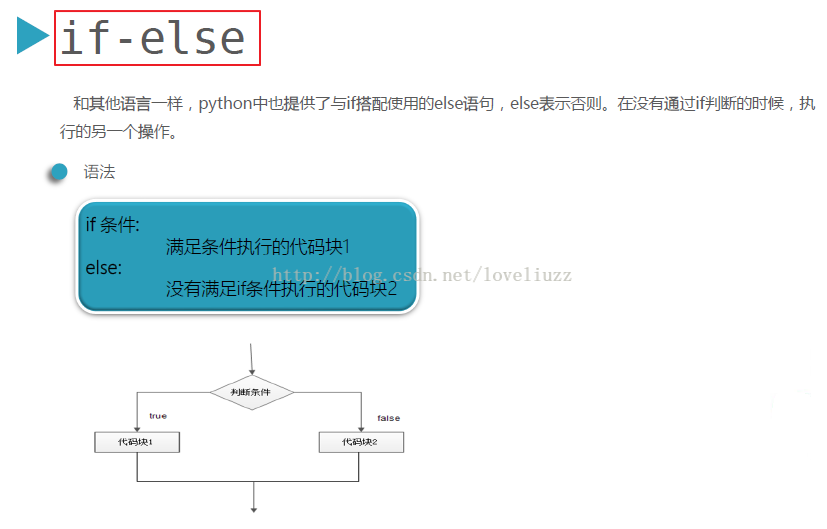
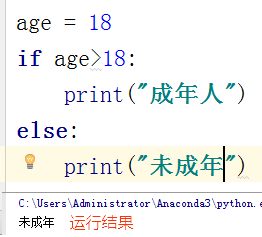
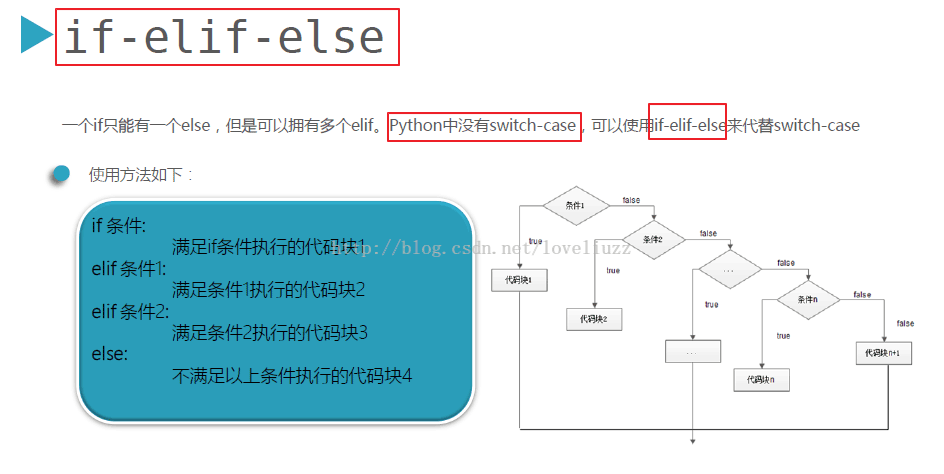
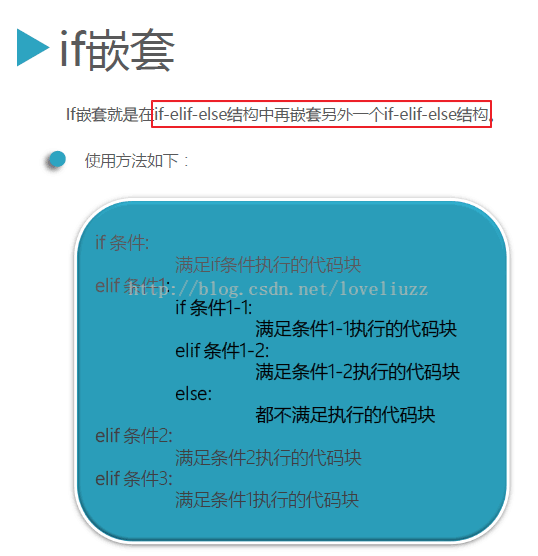
示例代码:
#!/usr/bin/env python
# -*- coding:utf-8 -*-
# Author:ZhengzhengLiu
i = 10
j = 20
if i<15:
print("hello")
if i>15:
print("hello")
else:
print("world")
if i<5:
print("hello")
elif j>12:
print("abc")
else:
print("world")运行结果:
hello
world
abc
(2)循环语句——while
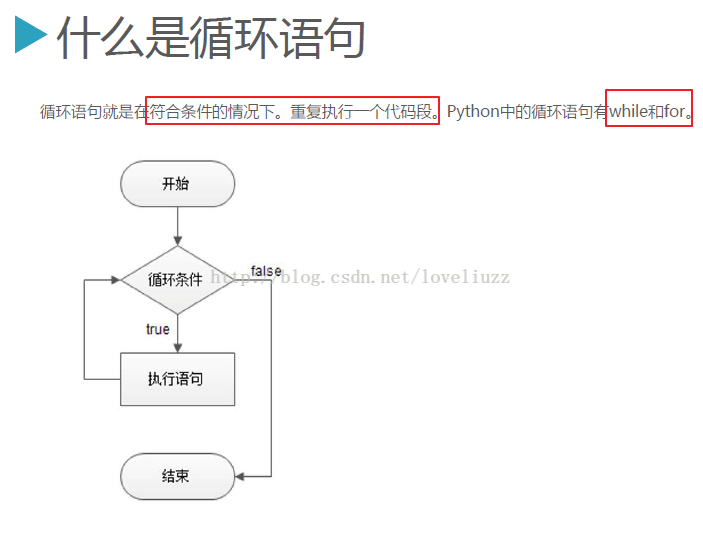
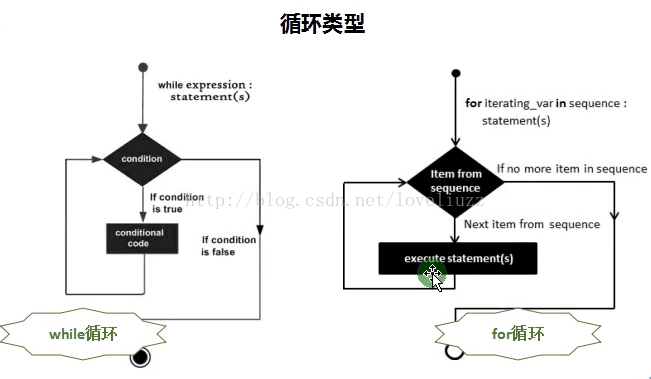
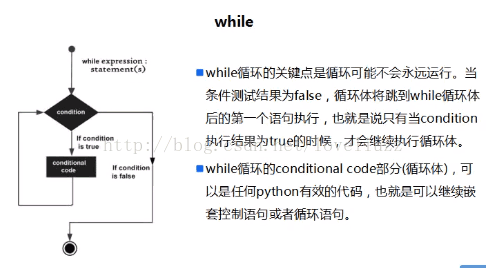
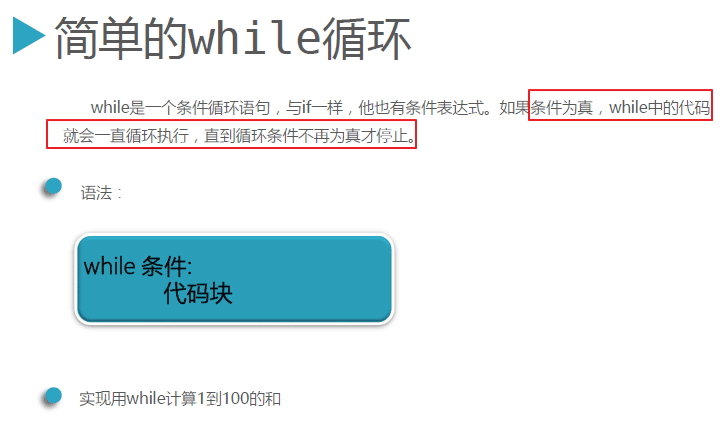
示例代码:
#while循环计算1-100的和 a = 1 sum1 = 0 while a<=100: sum1 += a a += 1 print(sum1)
运行结果:
5050
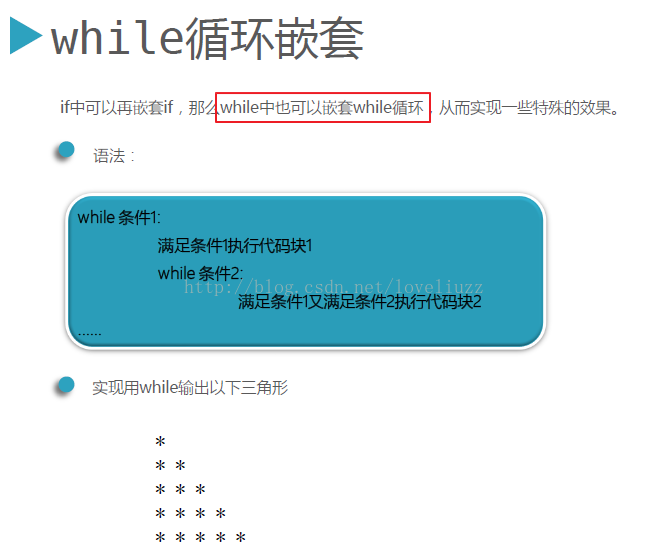
示例代码:
#while循环嵌套
i = 1
while i<=5: #控制行数
j = 1
while j<=i: #控制*的个数
print("*",end="")
j+=1
i+=1
print()运行结果:
*
**
***
****
*****
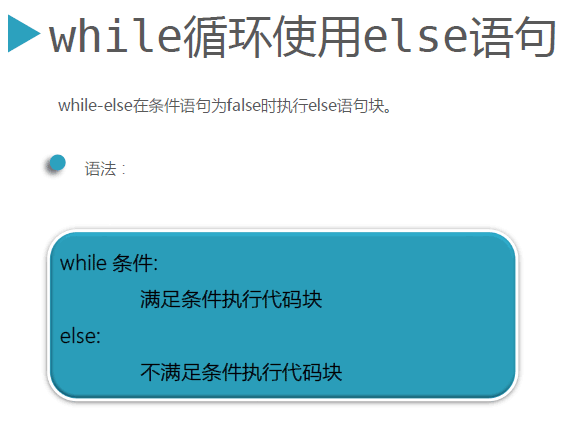

#让用户控制循环条件
i = True
while i:
inpu = input("是否退出程序?(y/n):")
if inpu == "y":
i = False运行结果:
是否退出程序?(y/n):n
是否退出程序?(y/n):y
(3)循环语句——for
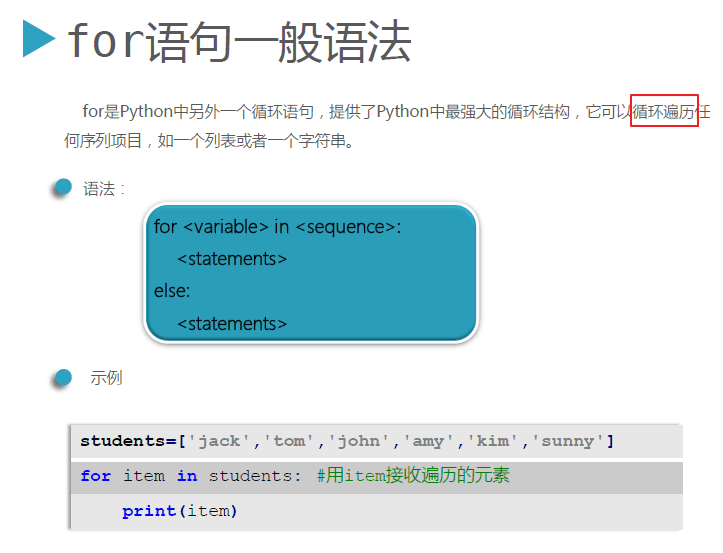
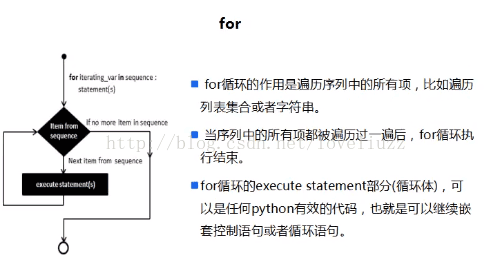
(4)for循环应用
a、利用for循环打印3行直角三角形
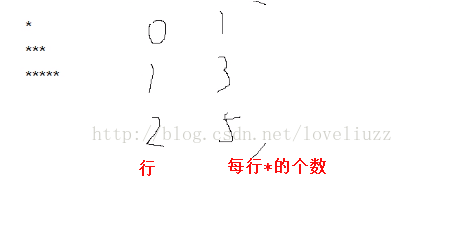
注:Python 2.x下的print语句在输出字符串之后会默认换行,如果不希望换行,只要在语句最后加一个“,”即可.
对Python 3.x的print语句:end赋值:print(something, something,.., end=''),使end值为空,这个换行就消除了.
#!/usr/bin/env python
# -*- coding:utf-8 -*-
# Author:ZhengzhengLiu
for i in range(3):
for j in range(i*2+1):
print("*",end="")
print("") #打印换行运行结果:
*
***
*****
b、利用for循环打印3行等腰三角形
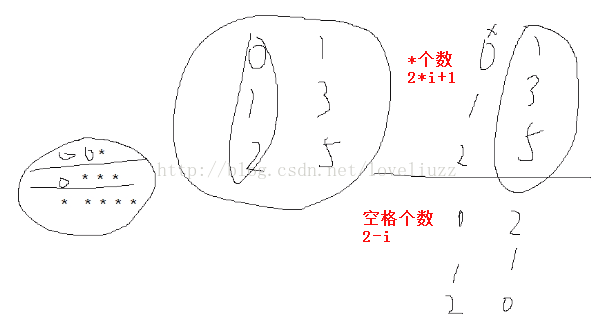
#!/usr/bin/env python
# -*- coding:utf-8 -*-
# Author:ZhengzhengLiu
#打印3行等腰三角形
for i in range(3):
for j in range(2-i):
print(" ",end="") #空格打印
for k in range(2*i+1):
print("*",end="") #*个数打印
print("") #打印空格运行结果:
*
***
*****
(5)break、continue语句
a、break语句及应用


#!/usr/bin/env python # -*- coding:utf-8 -*- # Author:ZhengzhengLiu #break:从一个循环中直接中断退出 for i in range(5): if i == 3: break print(i)
运行结果:
0
1
2
b、continue语句及应用
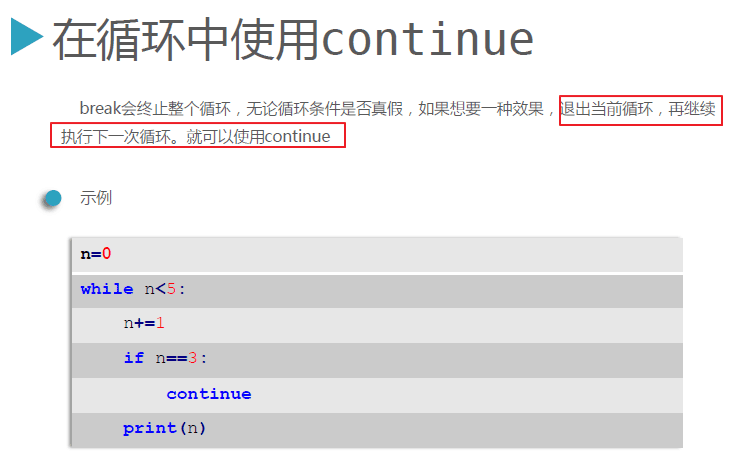

#!/usr/bin/env python # -*- coding:utf-8 -*- # Author:ZhengzhengLiu #continue:终止当前循环,进入下一次循环 for j in range(5): if j == 3 : continue print(j)
运行结果:
0
1
2
4
(6)pass语句
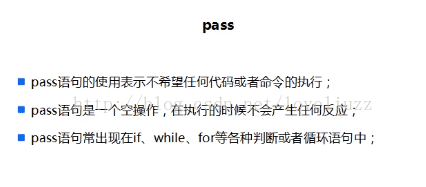
(7)range()函数
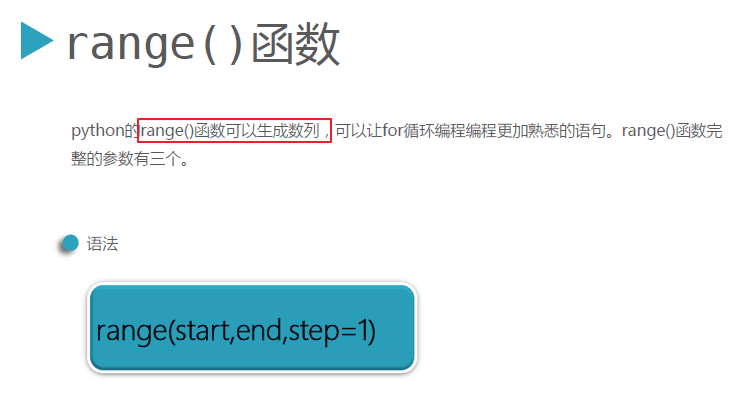
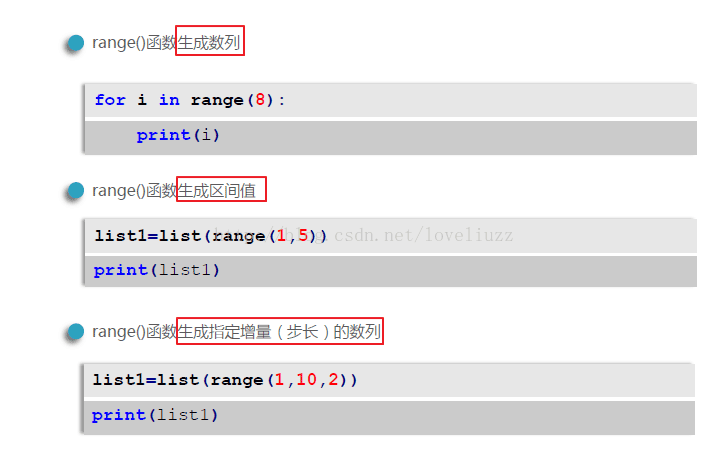

6、Python数据结构
(1)list——列表

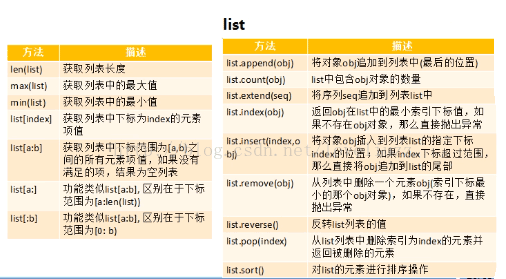
#!/usr/bin/env python
# -*- coding:utf-8 -*-
# Author:ZhengzhengLiu
list = [1,2,3,"hello",1,1]
list.append("world") #列表添加元素
print(list)
print(list.count(1)) #统计列表元素的个数
list.remove(1) #列表删除元素
print(list)
print(list[2:4]) #列表索引查询
list[0] = "hi" #列表修改元素
print(list)
list.reverse() #列表元素反转
print(list)
for i in list: #列表循环查询
print(i," ",end="")运行结果:
[1, 2, 3, 'hello', 1, 1, 'world']
3
[2, 3, 'hello', 1, 1, 'world']
['hello', 1]
['hi', 3, 'hello', 1, 1, 'world']
['world', 1, 1, 'hello', 3, 'hi']
world 1 1 hello 3 hi
(2)元组

注:元组的元素内容不可变的,一旦改变就变成另外一个对象了,开发中希望用的对象是统一对象,每个对象都有自己的特征和行为,这一点在开发中是非常重要的。

# 元组 tup = (1, 2, 3, "hello") print(tup[1]) print(tup[0:2]) print(tup.count(1)) for i in tup: print(i,"",end="")
运行结果:
2
(1, 2)
1
1 2 3 hello
(3)字典
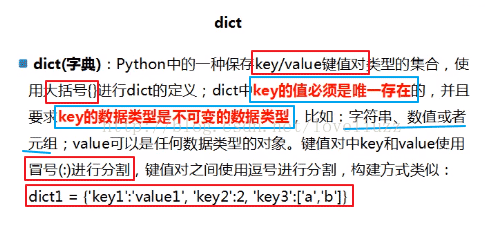
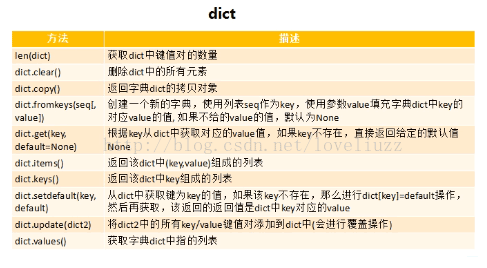
#字典(无序--hash存储)
dic = {"name":"liu","age":18}
print(len(dic)) #打印字典长度
print(dic.get("name")) #根据可以获取值
print(dic.keys()) #打印所有key组成列表
print(dic.values()) #打印所有值组成列表
for i in dic:
print(i) #打印key
for i in dic:
print(dic[i]) #打印值
dic.clear() #清空字典
print(dic)运行结果:
2
liu
dict_keys(['name', 'age'])
dict_values(['liu', 18])
name
age
liu
18
{}
(4)集合:将重复的元素去掉,用{}
#集合
arry = {1,2,4,2,1,"hello",1,4}
print(arry)
arry.add("bai") #添加元素
print(arry)
arry.remove(2) #删除集合里面元素
print(arry)
for i in arry: #循环打印集合的元素
print(i)运行结果:
{1, 2, 'hello', 4}
{1, 2, 'hello', 4, 'bai'}
{1, 'hello', 4, 'bai'}
1
hello
4
bai
看完了这篇文章,相信你对“Python3.5基础之变量、数据结构、条件和循环语句、break与continue语句的示例分析”有了一定的了解,如果想了解更多相关知识,欢迎关注亿速云行业资讯频道,感谢各位的阅读!
免责声明:本站发布的内容(图片、视频和文字)以原创、转载和分享为主,文章观点不代表本网站立场,如果涉及侵权请联系站长邮箱:is@yisu.com进行举报,并提供相关证据,一经查实,将立刻删除涉嫌侵权内容。